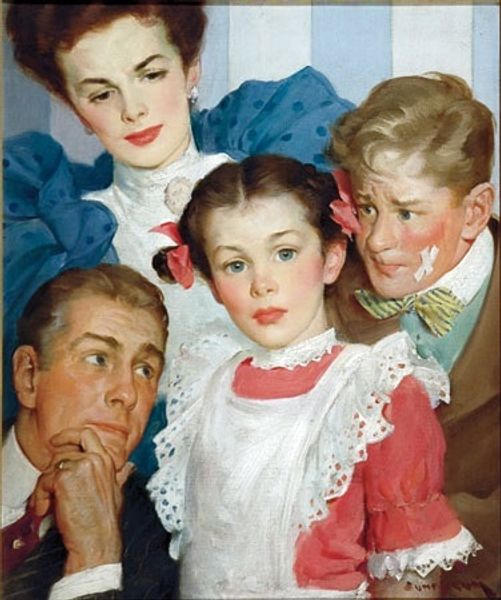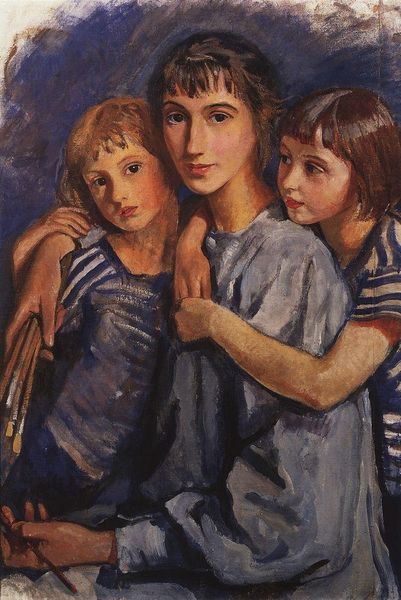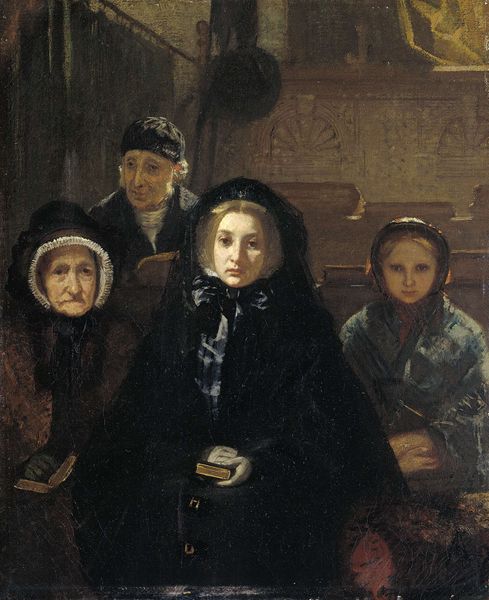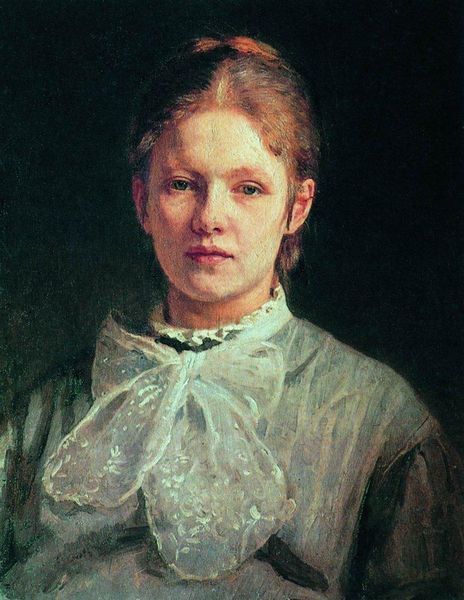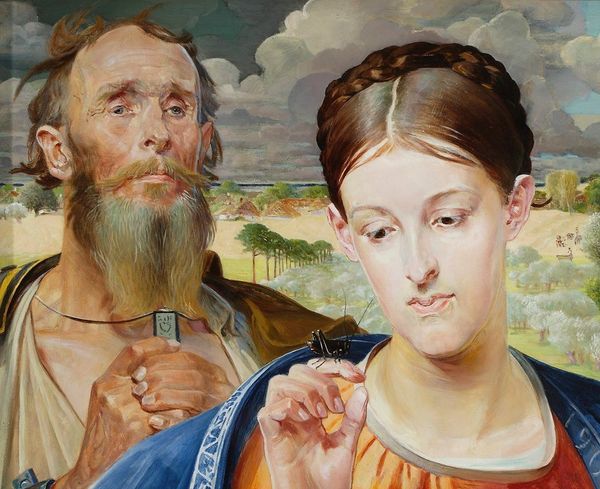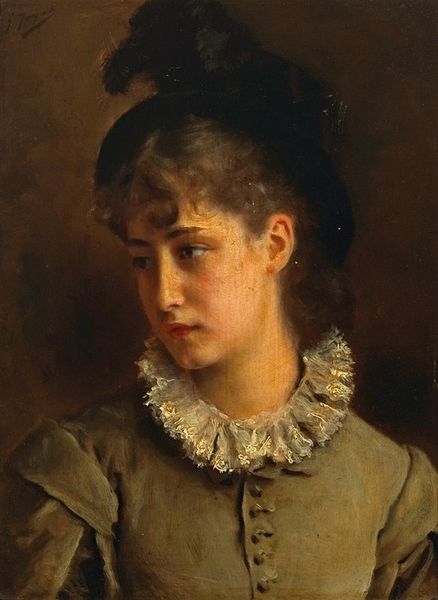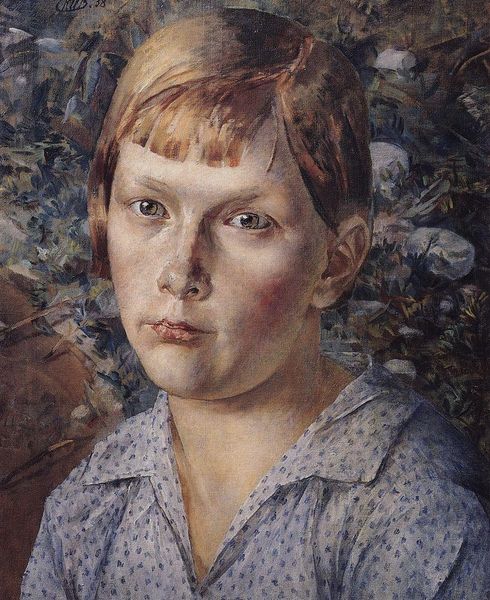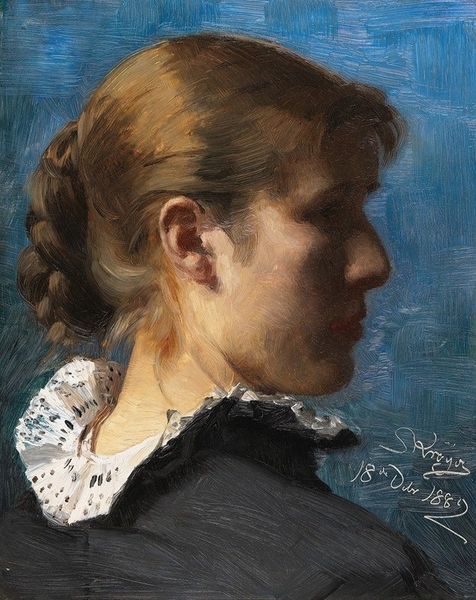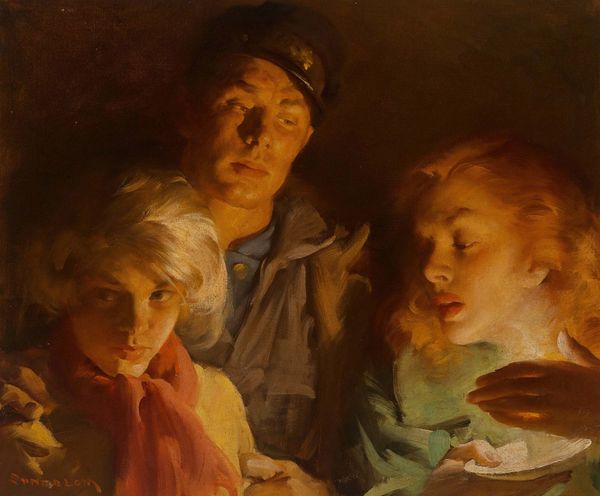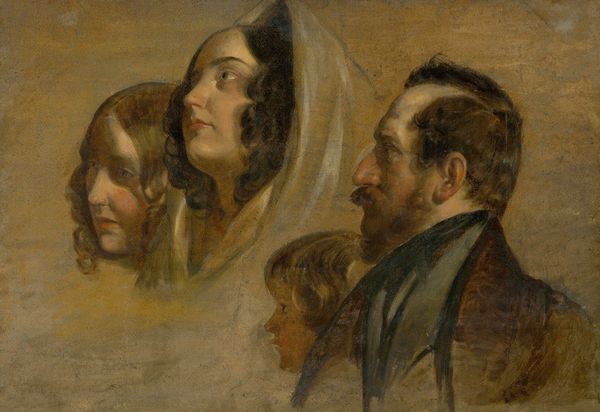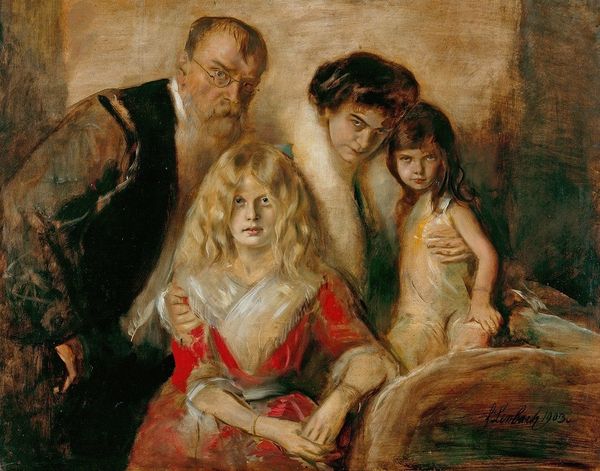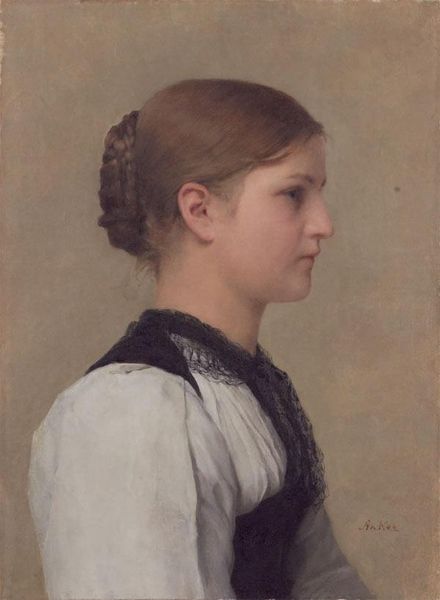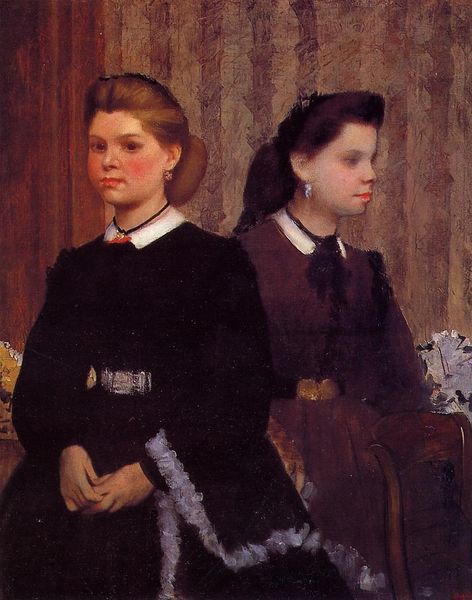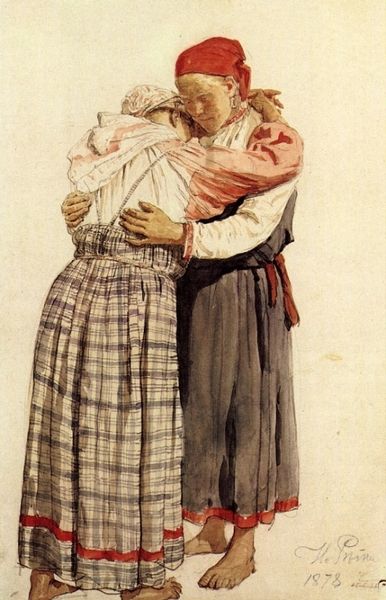
Dimensions: 30 x 61 cm
Copyright: Public domain
Editor: Here we have Lawrence Alma-Tadema’s painting, "Portrait of Aime Jules Dalou, his Wife and Daughter," from 1876. It's rendered in oil paint and has an intimate feel, like a personal memento. I am intrigued by the positioning of the family members; it's an unusual arrangement. What symbols and stories do you find embedded in this image? Curator: It's true, the arrangement strikes us as unusual now, yet consider this in relation to notions of artistic brotherhood and domesticity that were burgeoning during the Romantic period. Dalou, himself a sculptor, is literally and figuratively behind his wife, perhaps implying his support. His gaze is serious; consider the power dynamics communicated through pose and gesture. The cigarette he's holding almost seems a marker of status. Do you see a continuity with Renaissance depictions of the nuclear family? Editor: I can see the parallel, but there is something more immediate and less formal here than a typical Renaissance painting, like the subjects were captured candidly. Curator: Precisely. Alma-Tadema invites us to examine the iconography of modern family life. Note the little girl: her direct gaze engages us. Her bow and rosy cheeks project both innocence and self-awareness, signaling a transitional moment. Also, reflect upon the choice of muted tones. What effect do they have? Editor: It makes the portrait feel more honest, perhaps, less idealized. Like they're inviting you into a quiet, private moment, away from the stage of the world. I hadn't noticed how carefully each person’s gaze was arranged! Curator: Gaze, indeed, becomes another layer of symbolic language. Look closer: What do you think this work tells us about the shifting cultural values and roles of the family in late 19th-century Europe? What emotions and stories does this imagery evoke in us today? Editor: This has really given me a new perspective, particularly regarding how artists embed meaning through seemingly small details like the subject's gaze and stance. Curator: Indeed. By unraveling these visual codes, we find echoes of our own cultural values and assumptions about love, family, and self.
Comments
No comments
Be the first to comment and join the conversation on the ultimate creative platform.
